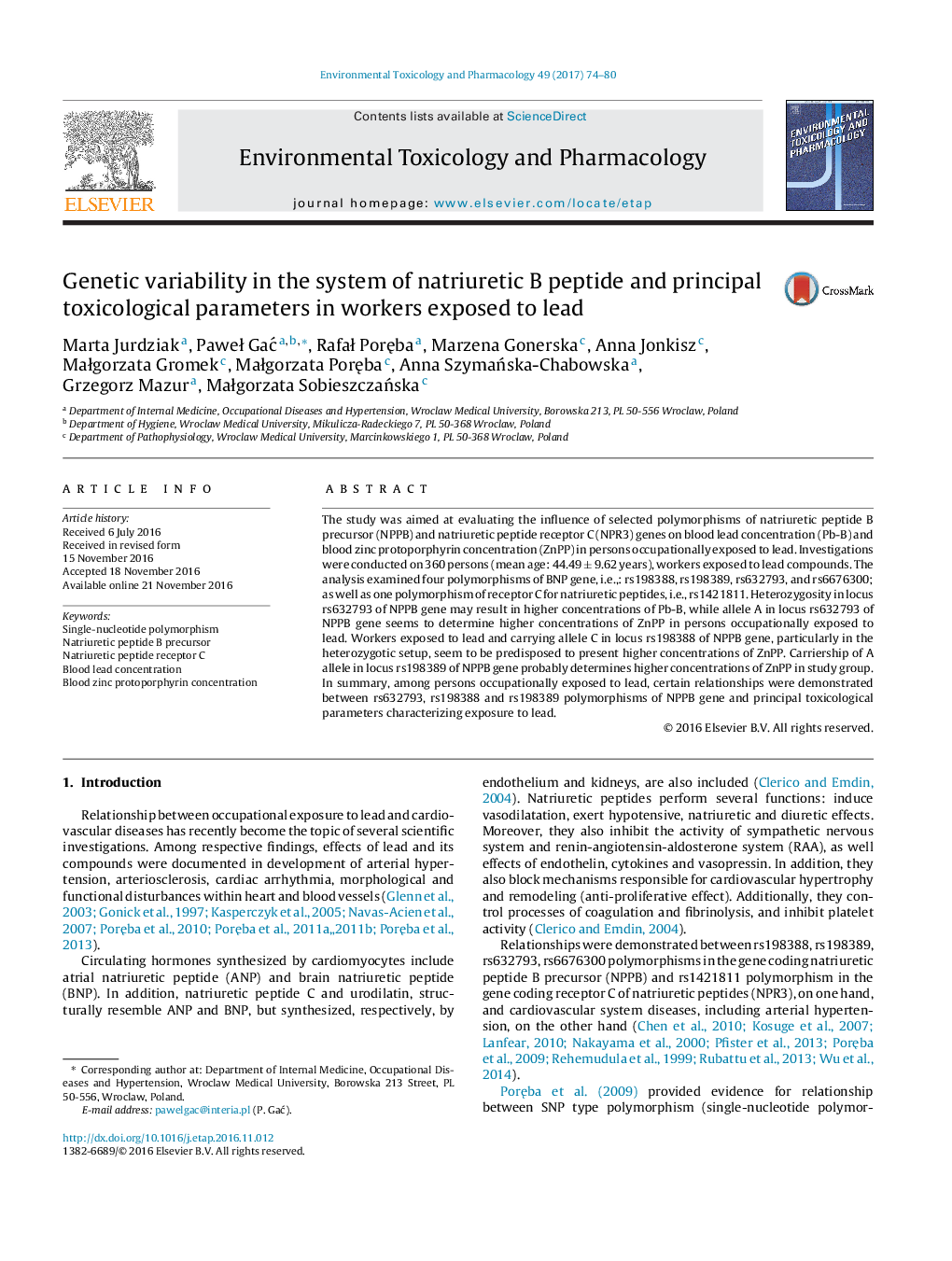| Article ID | Journal | Published Year | Pages | File Type |
|---|---|---|---|---|
| 5559865 | Environmental Toxicology and Pharmacology | 2017 | 7 Pages |
â¢Genetic variability of NPPB and NPR3 in workers exposed to lead was studied.â¢Relationships between polymorphisms rs632793, rs198388, rs198389 of NPPB gene and Pb-B, ZnPP were observed.â¢Polymorphism rs6676300 of NPPB gene and rs1421811 of NPR3 gene exert no influence on Pb-B and ZnPP.â¢The effect of genetic variability of NPPB and NPR3 on organ effects of exposure to Pb should be further subjected to scrutiny.
The study was aimed at evaluating the influence of selected polymorphisms of natriuretic peptide B precursor (NPPB) and natriuretic peptide receptor C (NPR3) genes on blood lead concentration (Pb-B) and blood zinc protoporphyrin concentration (ZnPP) in persons occupationally exposed to lead. Investigations were conducted on 360 persons (mean age: 44.49 ± 9.62 years), workers exposed to lead compounds. The analysis examined four polymorphisms of BNP gene, i.e.,: rs198388, rs198389, rs632793, and rs6676300; as well as one polymorphism of receptor C for natriuretic peptides, i.e., rs1421811. Heterozygosity in locus rs632793 of NPPB gene may result in higher concentrations of Pb-B, while allele A in locus rs632793 of NPPB gene seems to determine higher concentrations of ZnPP in persons occupationally exposed to lead. Workers exposed to lead and carrying allele C in locus rs198388 of NPPB gene, particularly in the heterozygotic setup, seem to be predisposed to present higher concentrations of ZnPP. Carriership of A allele in locus rs198389 of NPPB gene probably determines higher concentrations of ZnPP in study group. In summary, among persons occupationally exposed to lead, certain relationships were demonstrated between rs632793, rs198388 and rs198389 polymorphisms of NPPB gene and principal toxicological parameters characterizing exposure to lead.
